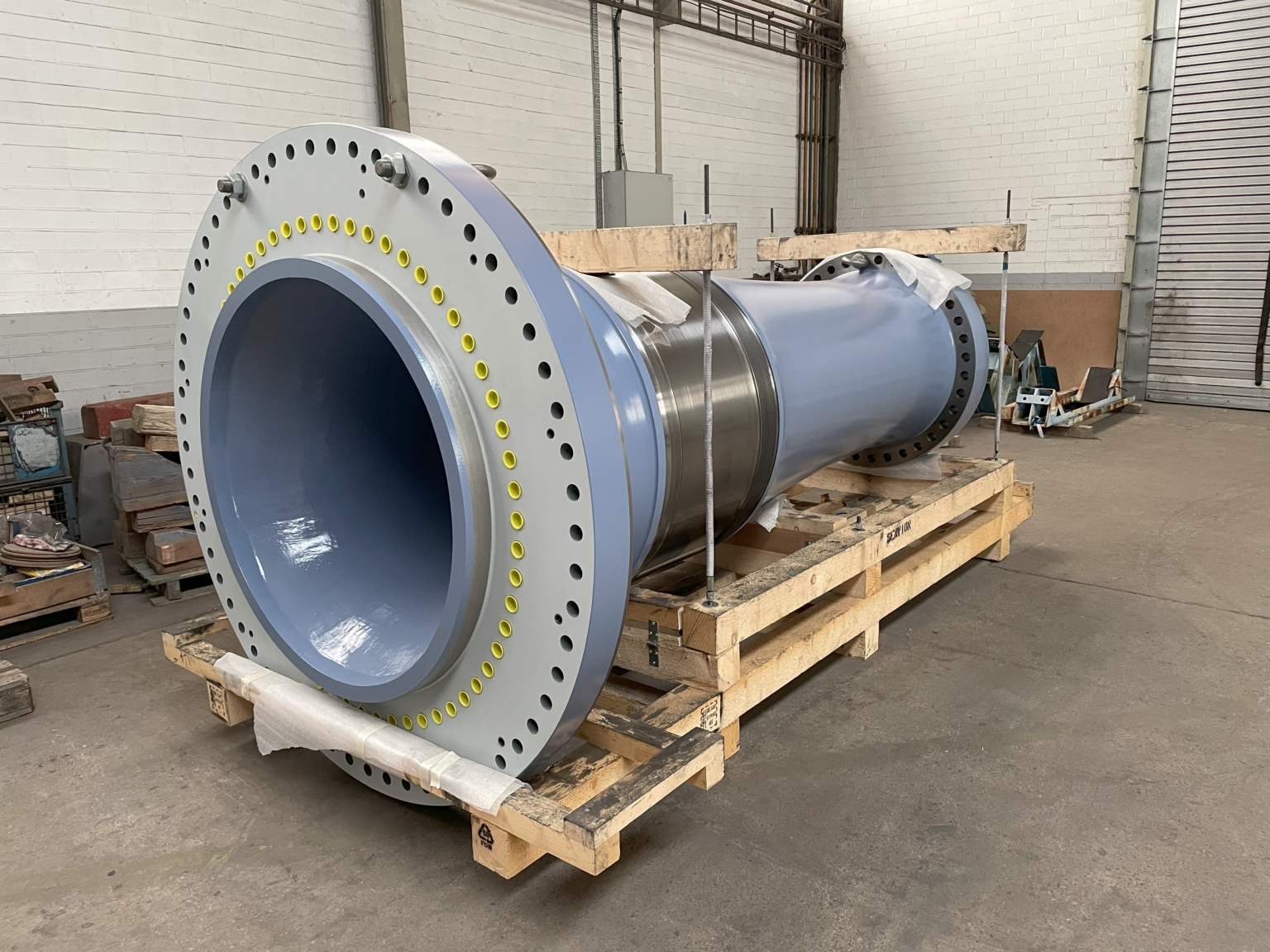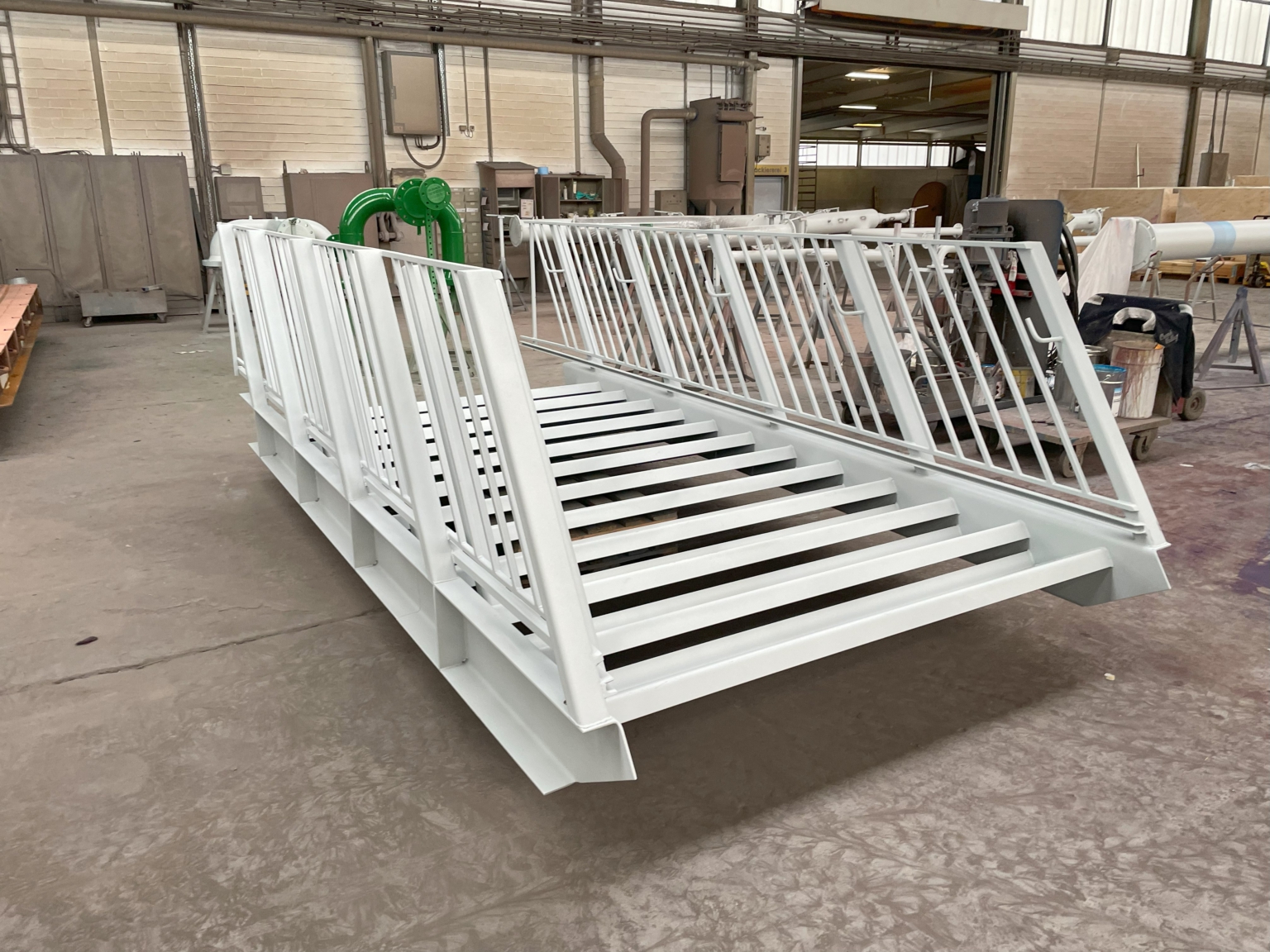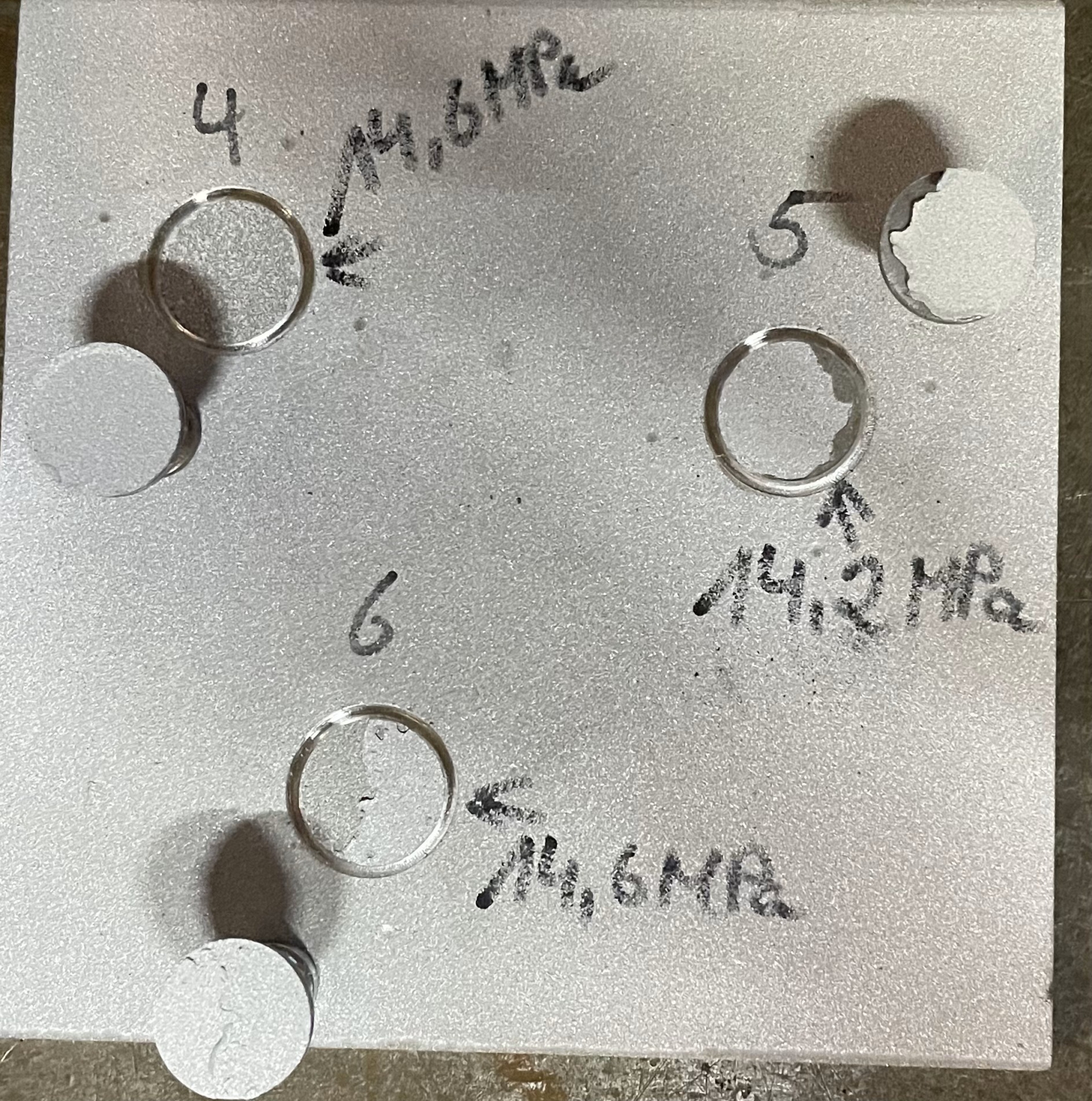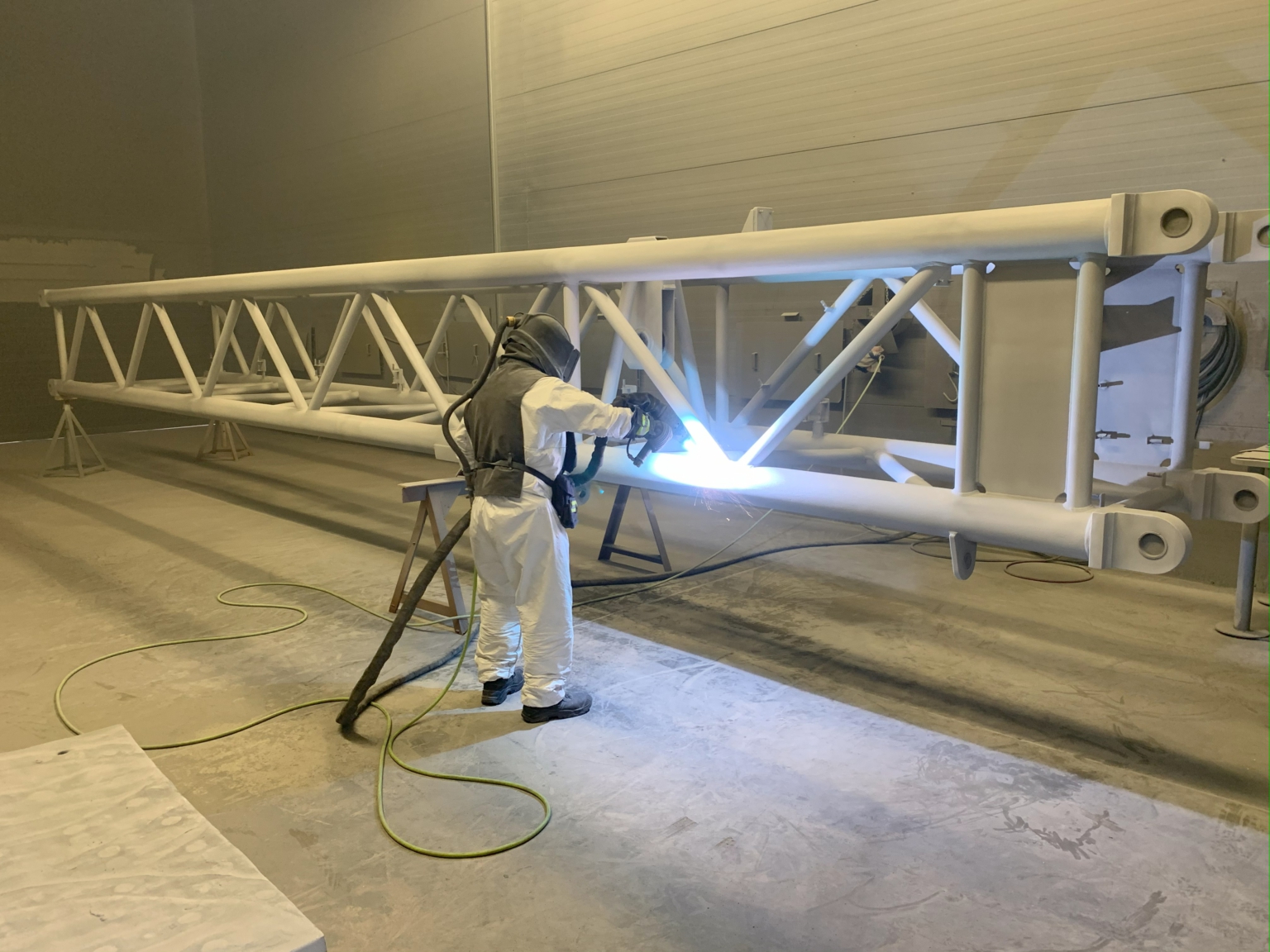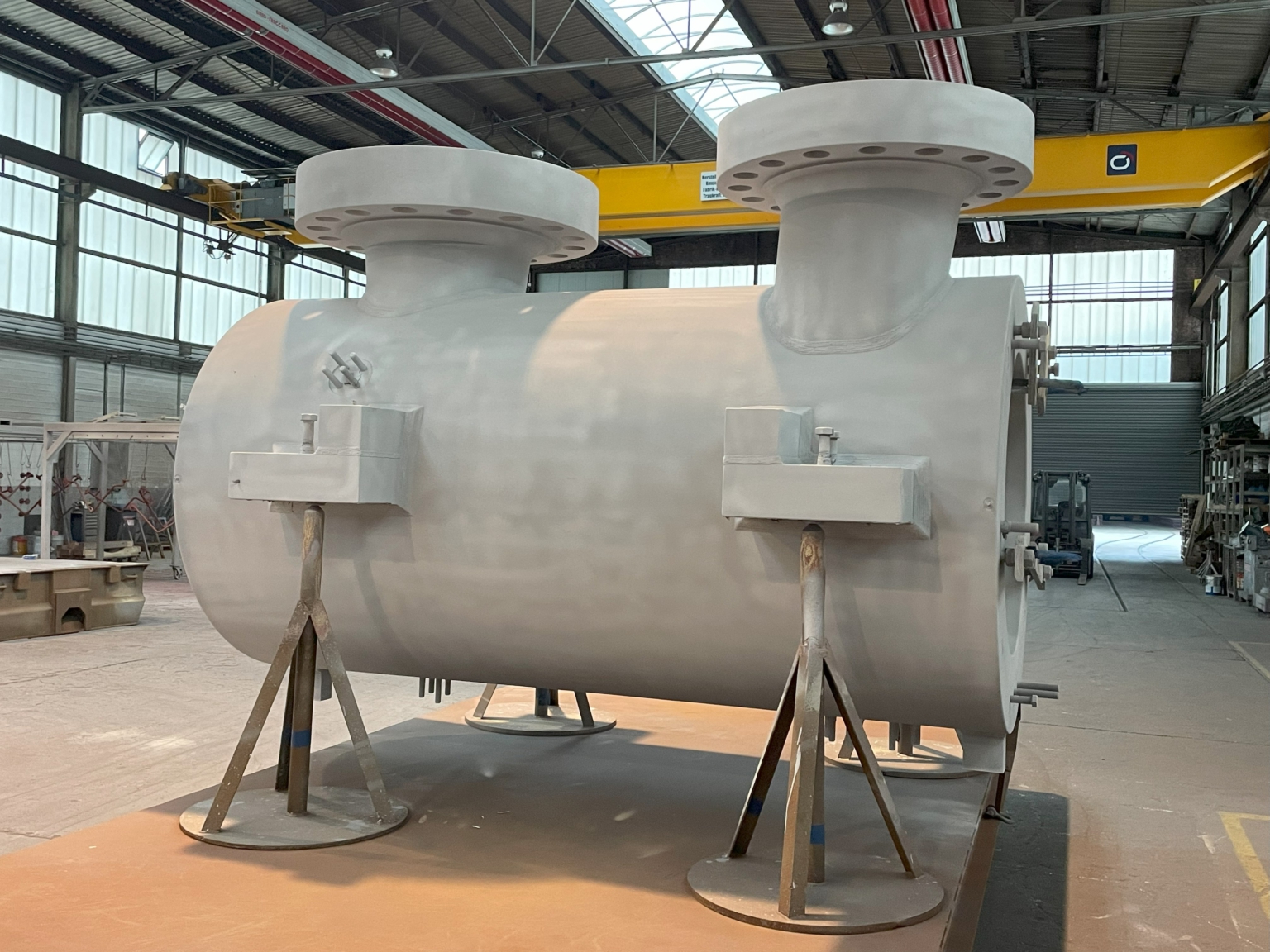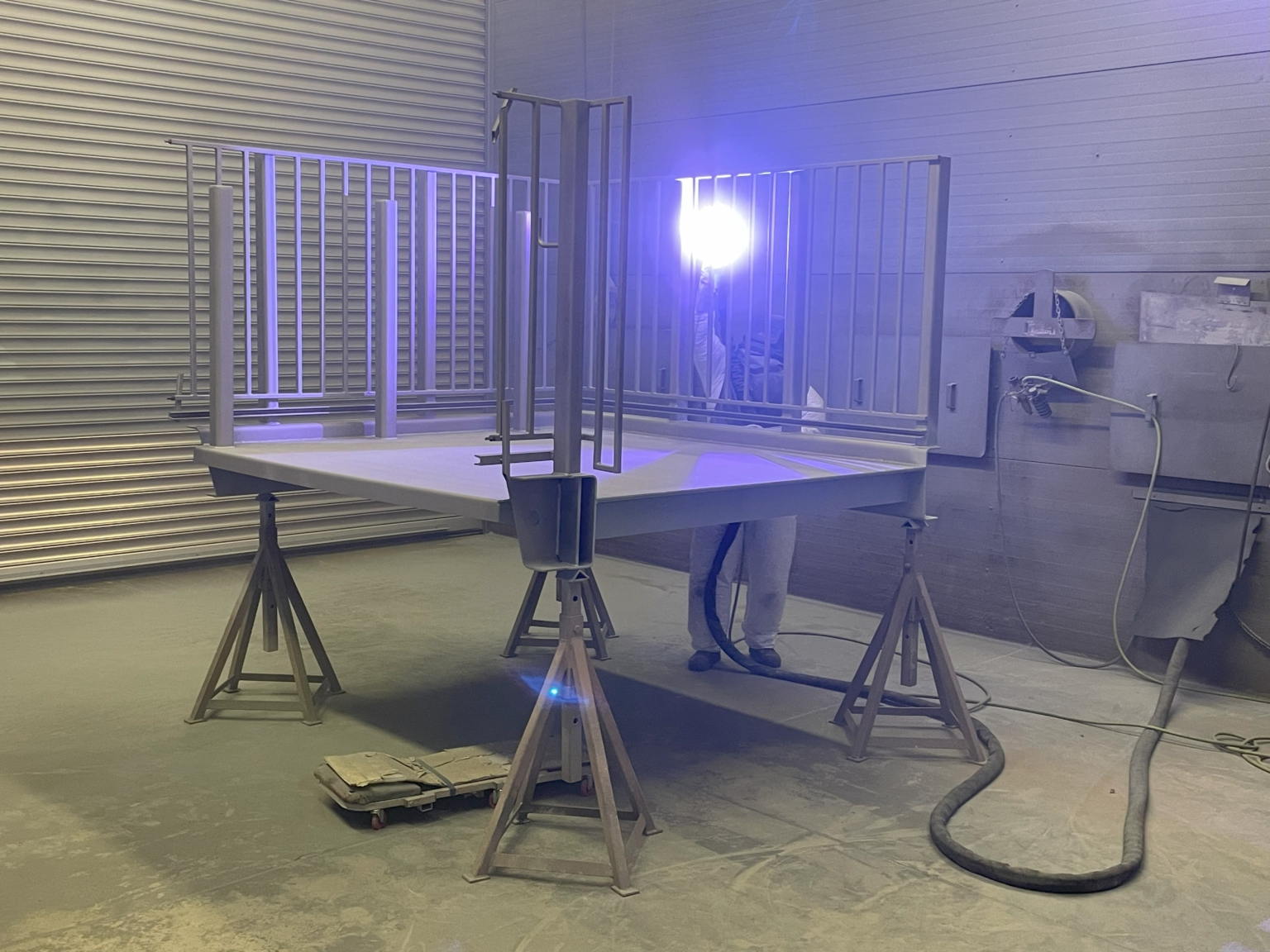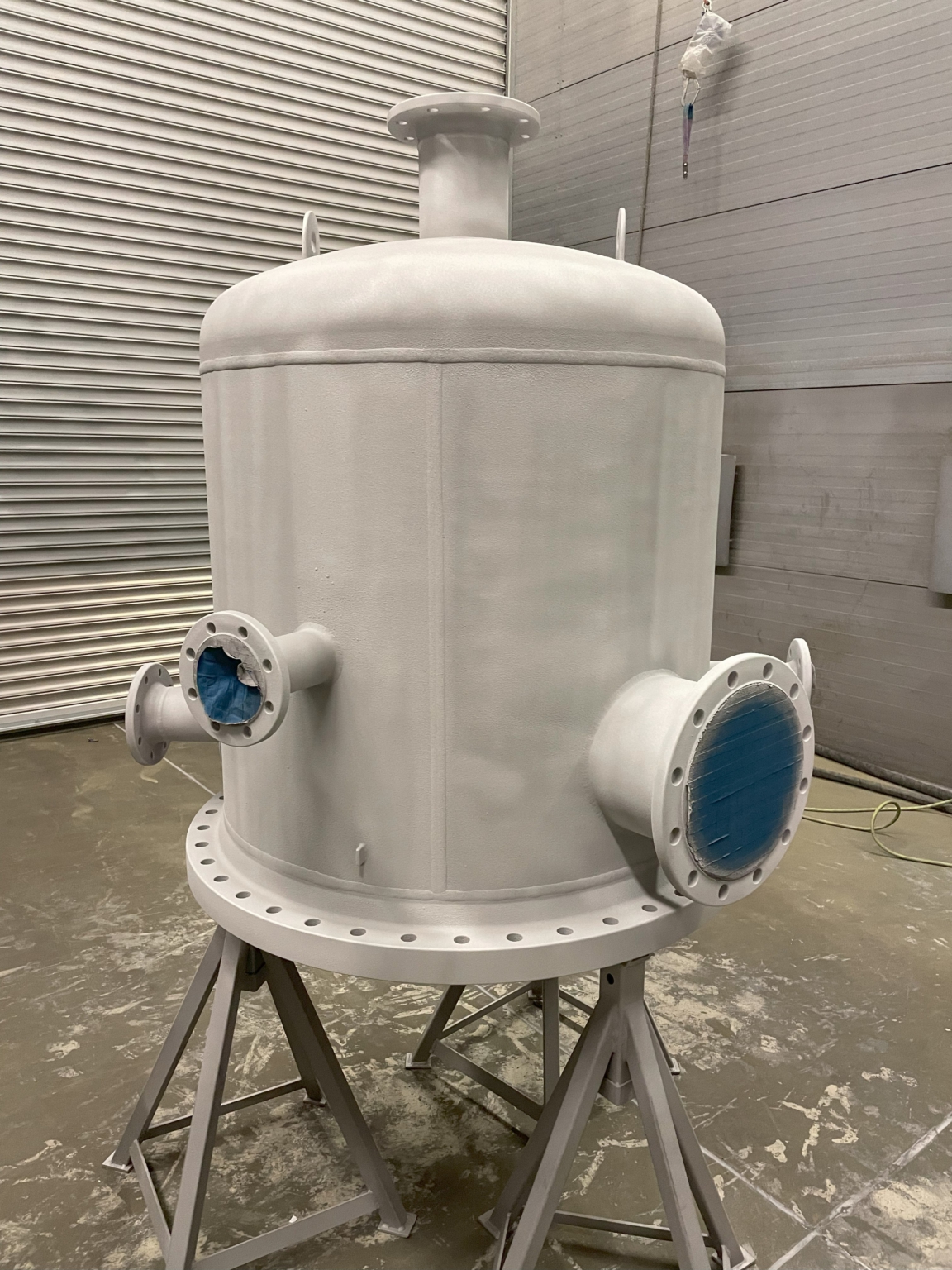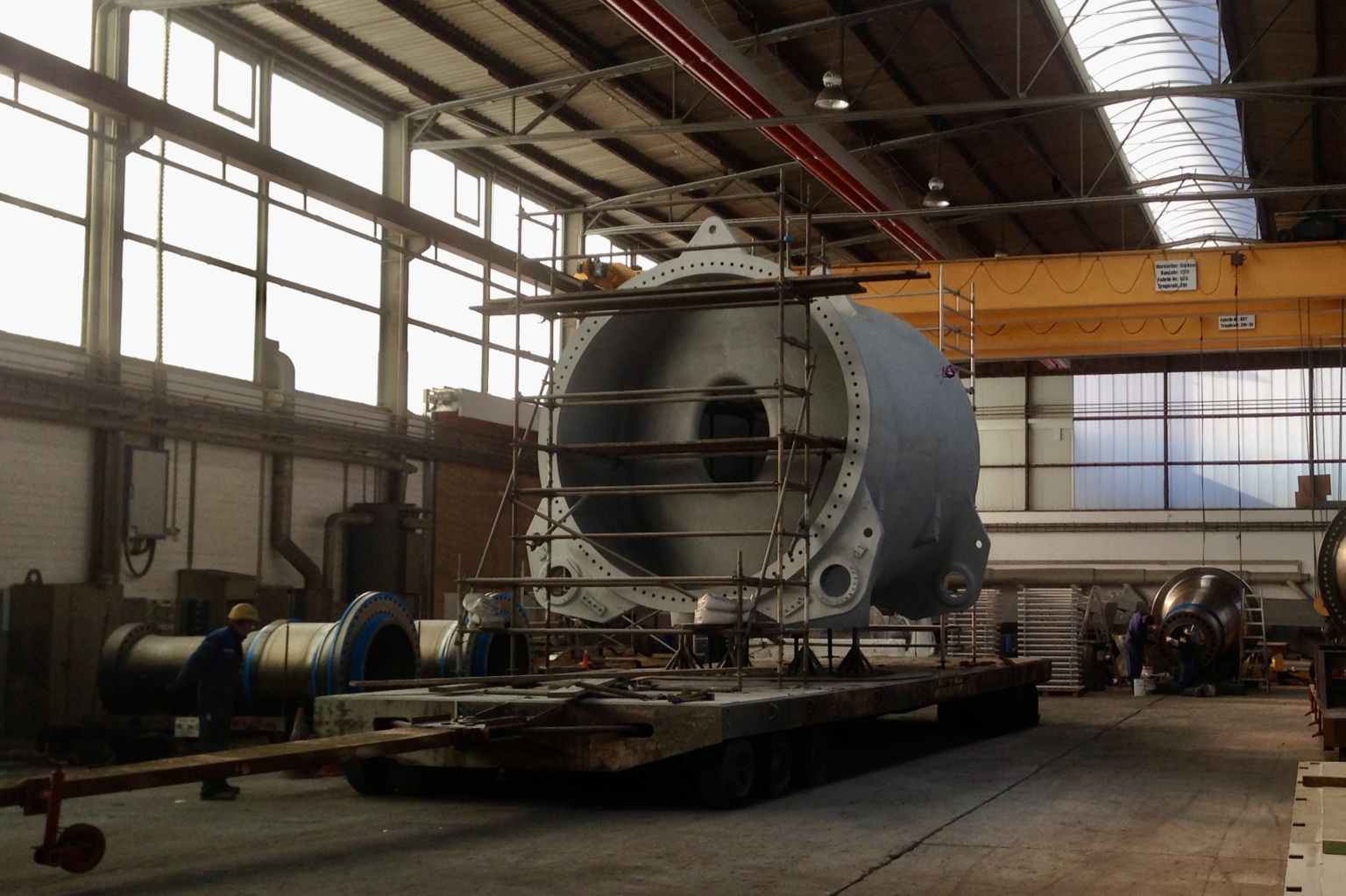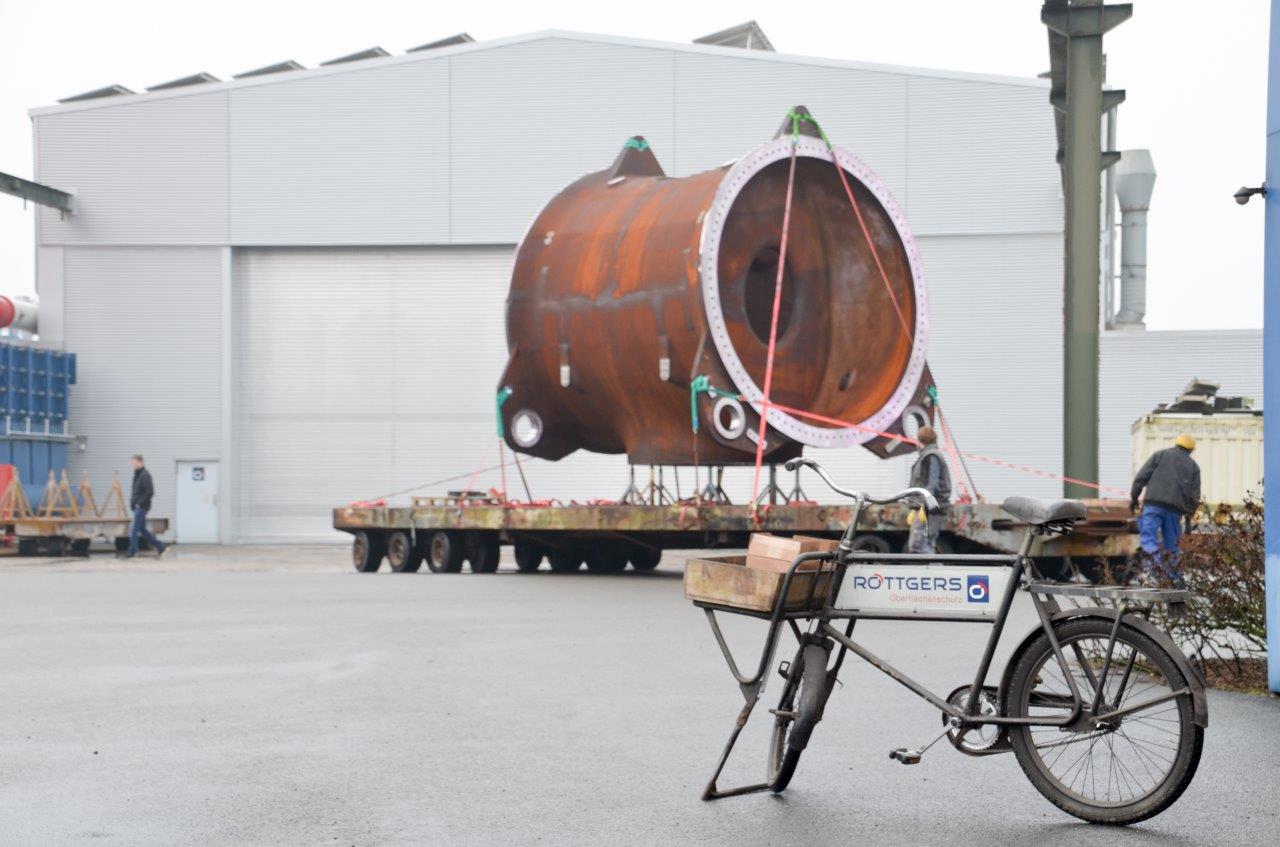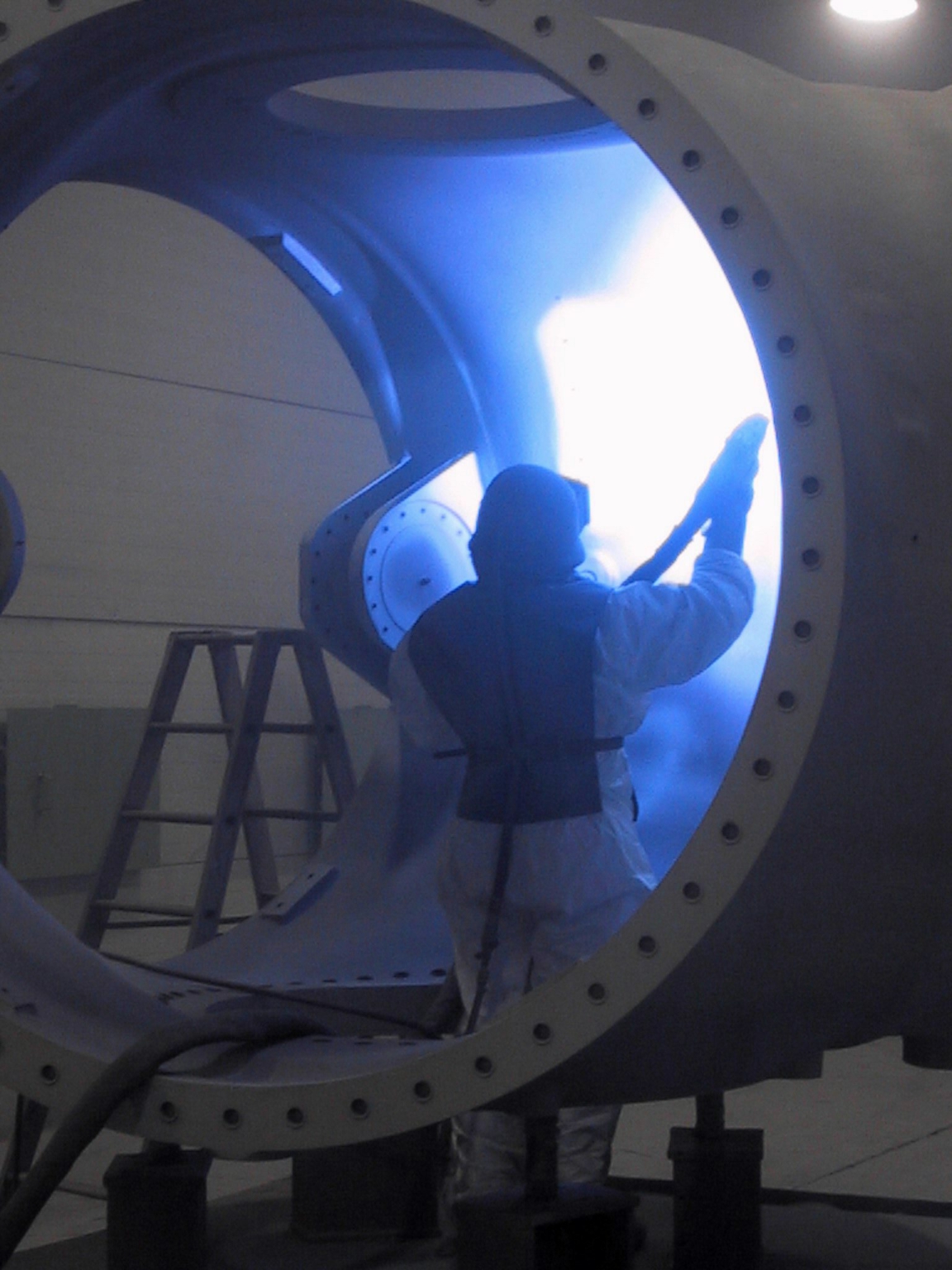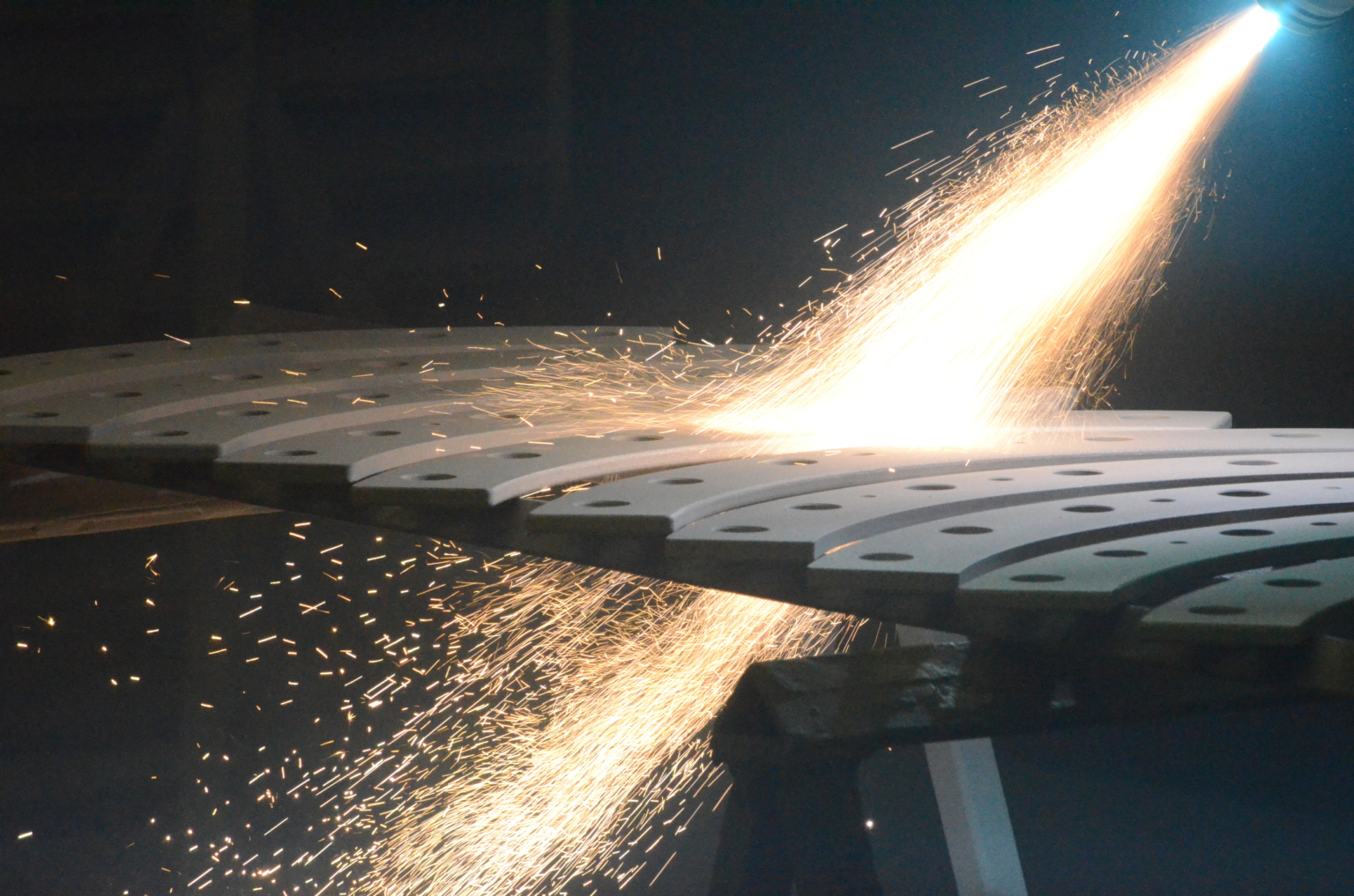
Metallisierungen mit dem Lichtbogen (Zink oder Alu-TSA)
Coating systems combining galvanization with additional coats of paint provide particularly effective corrosion protection. The prerequisite for the full effectiveness of the duplex system is good adhesion of the coating to the zinc layer. We can create this optimal surface using arc metal spraying.
Even large structures and heavy objects that can’t be treated in a galvanizing plant are galvanized using arc metal spraying. Warping of the workpieces, as is the case with hot-dip galvanizing, is eliminated.
Coatings applied using the arc spraying process are characterized by excellent adhesion, exceeding that of flame spraying. The spray particles fuse with the base material. The color of the sprayed coatings is almost indistinguishable from the base material.
Arc-sprayed coatings exhibit approximately three times higher tensile strength and lower shrinkage stress than flame-sprayed coatings. Metal-sprayed coatings are microporous, which offers significant advantages for plain bearings and seal rings. Regardless of the base material, all materials can be metallized, eg, iron/non-ferrous alloys on cast iron.
In arc spraying, two wire-shaped, electrically conductive spray materials are continuously fed toward each other at a specific angle. After ignition, an arc burns between the spray wires (electrodes), melting the spray material. A powerful compressed air stream atomizes the molten material and accelerates the spray particles onto the workpiece surface. Due to the process, only metallically conductive, wire-shaped materials can be processed.
In the offshore oil industry, aluminization (TSA = Thermal Spray Aluminum) is often used, which is then provided with a sealer (subsequent coating).

Seiten
TAGS
LEISTUNGEN
Strahlentrostung
Metallspritzen (TSA)
Korrosionsschutz
Pulverbeschichtung
Kontakt
Karl Röttgers GmbH
Deverhafen 19
26871 |
Telefon +49 4961 9499 0
eMail info@roettgers.de

